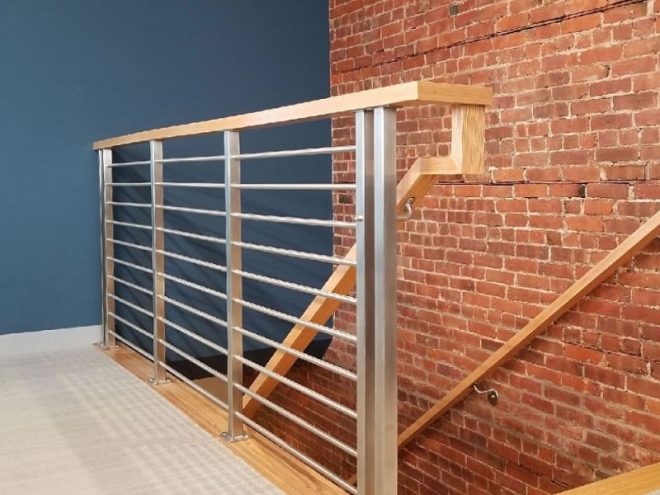Railing systems complete with stainless steel are now average in contemporary buildings. Many commercial, inhabited, and industrial schemes make use of these railing systems due to their strength, longevity, and good-looking arrival. Whether installed in balconies, staircases, terraces, or public spaces, stainless steel railings offer both functionality and elegance.
To help you comprehend why stainless steel railing systems are so popular in contemporary buildings, this article delves into their definition, significance, various types, benefits, installation techniques, and maintenance advice.
Railing Systems Made of Stainless Steel
Stainless Steel Railing Systems contain handrails, balusters, posts, and connections made chiefly from stainless steel. From simple, contemporary railings to traditionally good-looking designs, stainless steel railing options cater to several preferences.
The Value of Railing Systems Complete of Stainless Steel
Stainless steel railing systems are crucial in ensuring safety, stability, and visual requests in various structures. Their significance resides in many important aspects:
Safety and Stability
Stainless steel railings are commonly installed with the express purpose of increasing safety. On balconies, stairwells, and other elevated surfaces, they offer sturdy support to forestall slips and falls. Their strong load-bearing capability provides stability, making them a trustworthy solution for both residential and business areas.
Durability and Strength
Stainless steel has strong tensile strength and does not react to corrosion, rust, or extreme weather conditions. Stainless steel railings resist damage when exposed to moisture and heat plus with heavy usage because they are different from regular wooden or iron materials.

Aesthetic Appeal
Stainless steel railing companies represent the elegant designs of today. Their smooth surfaces fit right into modern art and design, so these railings become popular elements in stylish homes, offices, and public areas.
Requires Minimal Upkeep
Stainless steel railings need minimal care since their maintenance-free surface cleans easily, unlike regular wooden or iron grill materials. These railings need less maintenance work in the future because they stay free from rust while also resisting stains, so you need to paint and polish them less often.
Versatility in Design
Stainless steel railings let users select from a wide range of design variations they can customize. Different architectural styles work together best when you use glass panels, cables, or wooden railings as additions.
Stainless Steel Railing Systems
Stainless steel railings exist in several types designed to work well in specific architectural and usage settings. These are the most normal types of stainless steel railing systems:
Railings made of stainless steel
Stainless steel wire strung between posts creates these railings. The manufacturer can use the wires either horizontally or vertically to construct them. The design simplifies ambiance while keeping the essential protective features of safety.
Railings made of stainless steel and glass
Steel frames and clamps with stainless steel construction join glass panel sections to each other and the railing posts. These railings serve both styles of contemporary luxury and work well in balconies, terraces, and office spaces.
Stainless Steel Rod Railings
Rod barriers place waist-high horizontal and vertical stainless steel rods between railing posts. This type of railing offers a contemporary, stylish appearance mostly seen in both staircases and outdoor deck areas.
Stainless Steel Handrails
You can find these systems in different public venues, which include airports, retail malls, and hospitals.
Compensations of Stainless Steel Railing Systems
Corrosion and Rust Resistance
The natural resistance of stainless steel helps it withstand outside elements in beach and natural areas without rusting.
Long Lifespan
Stainless steel railings are an excellent long-term investment because of their resilience and resistance to corrosion.
Fire and Weather Confrontation
The fire and termite confrontation of stainless steel railings makes them a brilliant choice for use in a wide range of surroundings where wood isn’t an optimal choice.
Installation of Stainless Steel Railing Systems
To ensure constancy and permanency, stainless steel railing classifications must be installed with accuracy and skill. Usually, it includes:
Preparation and Evaluation
Before installation, it is important to measure the area accurately and determine the railing design, height, and spacing between posts.
Material Selection
Choosing the proper grade of stainless steel (such as 304 or 316 stainless steel) is critical, especially for outdoor or high-humidity conditions.
Mounting and Protective
Mounting options for railings comprise the floor, walls, or even implanting them into the structure itself. The posts and barriers are fastened using welds, clamps, or screws.
Grooming and glazing
The railing superficial is and polished after connection to make it more stain-resistant and glossy.
Source:
Jobssimply write on education, business, jobs, and even more.



